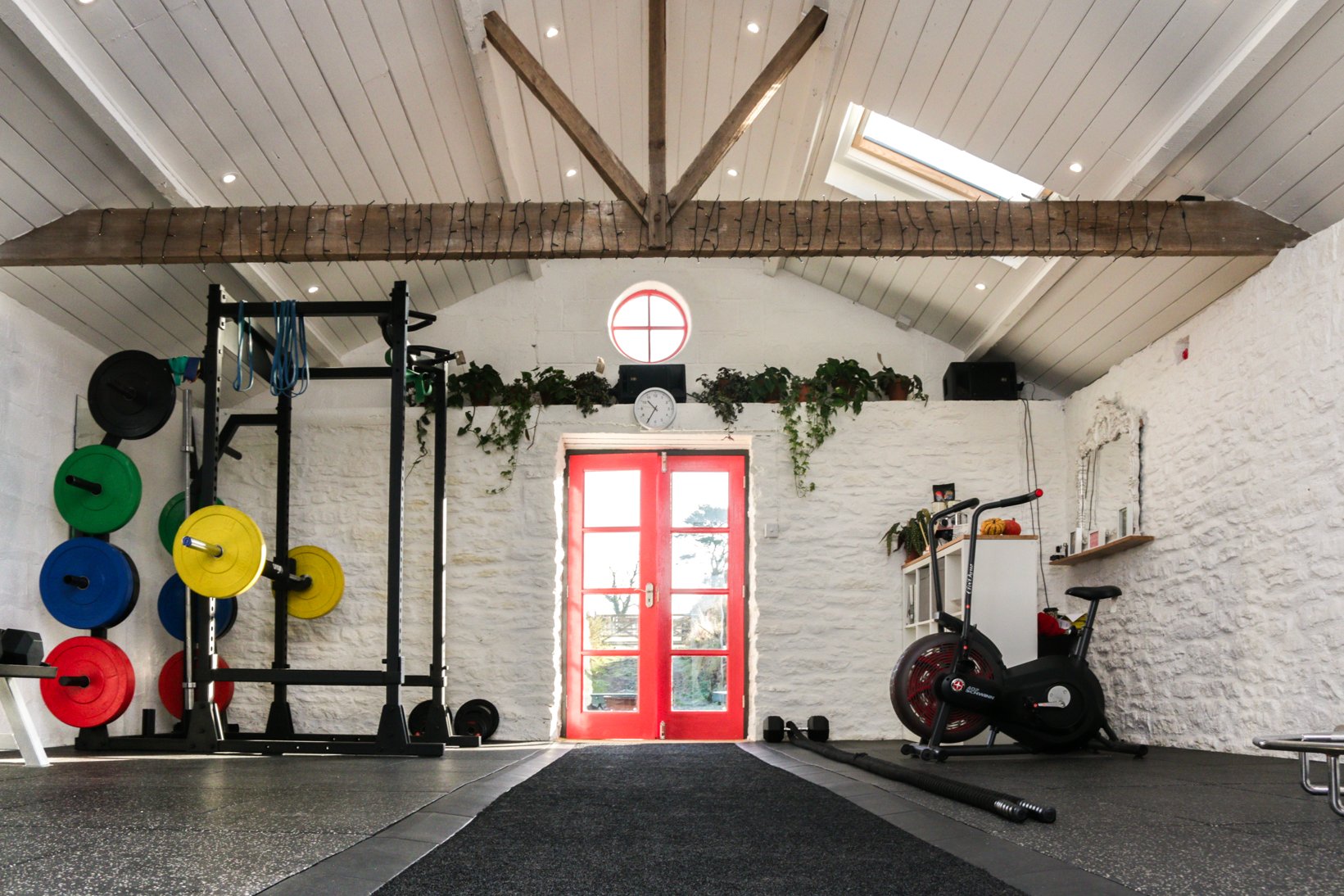Product added to cart


In this exercise bike buying guide we will explain the different types of stationary exercise bike that are purpose built for use in a gym or at home.
This buyers guide will help you choose the best exercise bike that's right for you and will hopefully answer most of your exercise bike questions.
When used properly an exercise bike can give you an effective cardio workout that's suitable for any level of fitness. They are also an ideal piece of equipment for use in the home as they can be stored away quite easily, unlike other larger pieces of fitness equipment that can dominate the room. Compared to other kinds of home fitness equipment, bikes are also relatively quiet.
In gyms, exercise bikes are very popular, both for group exercise classes but also on the gym floor where they are a favourite of members who aren't confident running on a treadmill or using a rower.
Due to the low weight-bearing nature of the exercise, the chances of being injured on an exercise bike is much lower than other fitness equipment The strain placed on the hips, knees and ankles is not as strenuous as other exercises like running or weight lifting.
As well as preventing injury, exercise bikes can also aid in the recovery from injuries. Again, due to the low weight-bearing nature, in most cases the user can continue to exercise their cardiovascular system without overloading their muscles.
At Origin Fitness we stock every type of exercise bike currently available on the market:
Every type of exercise bike essentialy does the same exercise, but we've taken a closer look at the features and characteristics found in the three different types of bike to help you distinguish between them and to understand the differences.
Flywheel - To give the rider a similar feeling to riding outdoors spin bike manufacturers leave the rotating flywheel open, unlike on other types of bike, in order to simulate the rolling motion. As the pedals turn, the perimeter weighted flywheel creates momentum which again gives the user a realistic riding experience.
Body Position - The first thing that you will notice when comparing the three kinds of exercise bike is that the body position on each is very different. When riding an indoor cycle, the seat and handlebars are close to level with each other meaning the rider's body has a lower, more aerodynamic profile that mirrors the riding position of a road or mountain bike.
Pedals - Adding to the realistic feel is the presence of dual sided or SPD pedals. Dual sided pedals come as standard on most indoor cycles, meaning you can either securely fasten your feet to the bike using the tight toe straps, or with the SPD clips on cycling shoes. The SPD system allows the user to physically attach their feet to the bike allowing them to transfer more power to the pedal and activate their hamstrings more during a pedal stroke.
Resistance - Resistance is applied on spin bikes by either friction or magnets. Magnetic resistance is increased by moving the magnets closer to the wheel and creating drag. Friction resistance is the more common of the two, and simply works by turning a knob which presses down on the flywheel like the brakes of a real bike.
Indoor cycles are commonly found in studios and areas of a gym that are used for group exercise classes. In some facilities the bikes are only available for use during instructor-led sessions, simply because a first time user might not realise that they cannot stop abruptly like on an upright or recumbent exercise bike. This type of bike is the machine of choice for cyclists, athletes and individuals who are looking for something on which to do some serious training.
Body Position - On an upright bike the shape still looks quite like a normal bicycle, however the handlebars tend to be higher up than the seat meaning the rider's body position isn't quite so low profile. This can often be comfier for people who aren't used to riding crouched over for long periods of time. Seats also tend to be slightly larger and comfier than on spin bikes, which are purely built for performance.
Braking - The crucial difference between the experience on an upright or recumbent bike and an indoor cycle is that you can stop pedaling immediately rather than having to be in a constant rotation that is consistent with the flywheel speed. It does mean that when you pedal hard on an upright or recumbent it can feel like the flywheel is moving faster than the pedals.
Technology - Upright exercise bikes often require power from a mains outlet which isn't always ideal in garages or sheds, where many people have their home gyms. What it does mean, is that upright and recumbent bikes have much more advanced displays and user interfaces. Where an indoor cycle just has a resistance knob, upright and recumbent bikes have displays which to control your workout. The displays generally show; time, distance, cadence, calories, heart rate and some even have preset workouts built-in.
Resistance - On upright and recumbent bikes, resistance is changed electronically using buttons on the console, normally these are simply 'up' and 'down' options to cycle through the available resistance levels. The resistance that makes pedaling harder is usually created by using magnetic pull.
According to Gymetrix, a leading gym equipment analysis company, upright exercise bike are in 1.98 times greater demand than recumbent cycles and over 2.5 times greater demand than indoor cycles. This tells us that the upright is the most popular type of the three bikes for use on the gym floor (not accounting for usage during spin classes). Some would say that for use at home, the upright offers more flexibility, you can use it for an intense training session, but it's also safe for other members of the family to use. Compared to many indoor cycles, uprights are also quite quiet which makes them more suitable for home use. People who want a more forgiving piece of equipment might want to choose an upright bike.
Body Position - Last but not least is the recumbent bike. Probably the most distinctively shaped of the three types of exercise bike. You will notice a recumbent bike has a seat with an upright back to it, similar to a chair. The pedals are out in front of the user rather than directly underneath. This body position makes recumbent models ideal for people who are less mobile or who have lower back problems.
Recumbent bikes are often ridiculed by avid spin class goers and the super-fit, but what they probably don't realise is that using them can have significant benefits. Recumbent bikes are actually very good for building leg strength, because the back and upper body is supported, the legs are isolated and have to work harder without the support of trunk and upper body movement. For this same reason, recumbent bikes are ideal for people with injuries because there are fewer muscle groups involved and for many people allow them to exercise without pain. Finally, recumbent bikes are comfortable to ride which, some experts say, means you're more likely to get back on it when struggling for motivation.
For each of the kinds of exercise bike we have looked at there are two further categories; home and commercial. The expectation on gym equipment is that light commercial equipment is designed to withstand up to 6 hours use per day, however, for anyone who expects usage greater than this we would always recommend full commercial equipment. The materials and build quality used in commercial bikes is generally higher than home models, so these command a higher price. For an entry level home indoor cycle, prices would normally be between £200-£500, for a premium model this could be from £500-£800. For commercial spin bikes, you would be looking at a price somewhere in excess of £700.
Upright and recumbent bikes start around the same price, with the cheapest models of each available for around £400. Premium commercial models of these bikes can be much more expensive though, often in excess of £7000.
One alternative to buying a brand new exercise bike, is to look at refurbished or ex-demo models. Even for home users looking for a good quality bike, a refurbished indoor cycle or exercise bike can be much more cost effective and are often better quality pieces of equipment.
If you do decide to buy a refurbished or ex-demo model, it's important to ask what work has actually been done to the bike during the refurbishment. When Origin Fitness refurbish a spin bike, we take all of the components off the bike and make sure all the parts are in working order. If we find any parts that are damaged we replace them. When required, we also sand blast all metal parts to remove as much of the cosmetic wear and tear as possible.